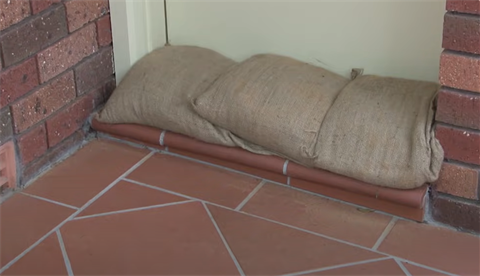Sandbags available but don't take more than you need please
Published on 11 February 2023

Preparing for a flood event includes sandbagging vulnerable doorways of your house to keep water out for a short period. Placing plastic sheeting, for example a tarpaulin, in front of the sandbags will improve their effectiveness.
If you are in a flood-prone area and think sandbags will help reduce the impact of potential flooding to your house, get ready now. You can buy sandbags and sand from hardware stores, and we have a limited supply available for collection only.
Here are the locations of temporary sandbagging stations to help you get ready for the forecasted severe weather.
Please note that supplies are limited, and our stocks have been hit hard. Please take only what you need to place in front of your dwelling doors if your home is in a flood-prone area. If you take too more than that, someone else will miss out.
The sandbagging stations will be open 24/7 (or while stocks last) today (Saturday 11 February) and up until Sunday 3pm at:
- Thames - TCDC office 515 Mackay St - empty bags only
- Thames - Shoppers' car park, Danby Field Queen St - sand only
- Coromandel Town - James Drainage Seabrook Rd near 1020 Tiki Road - empty bags, sand
-
Whitianga - Buffalo Beach main reserve - empty bags, sand
-
Whitianga - TCDC office 10 Monk St - empty bags only
-
Pāuanui - Veolia wastewater treatment plant Hikuai Settlement Rd - sandbags and sand
-
Whangamatā - Depot Lindsay Rd - sandbags and sand
-
Te Puru Hall - 4 West Crescent - empty bags and sand
-
Tapu - Fire station 750 Thames Coast Rd - empty bags, sand
-
Tairua - Red Bridge Rd - sandbags and sand
At each sandbagging station or nearby, you can collect sand. Please bring your own shovel. Stock is running out fast and we are working on restocking these sites as soon as possible.
Take care when handling sandbags, they can be heavy.
How to make sandbags
Each sandbag uses approximately 15kg of sand so it’s easiest to have two people - one to hold the bag and the other to shovel the sand.
Fill bags to half or two-thirds full to give the sand room to expand as it absorbs water.
Tie the bag closed. Bring your own tie.
If you’re making sandbags at home, use sand or heavy soil. Don’t use gravelly or rocky soils, because this will let the water through. And please don’t remove sand from beaches because it might be contaminated. You can use any suitable bag, for example old plastic shopping bags can be useful.
This video shows how to lay sandbags:
How to place sandbags
For stability, sandbags can be placed up to two bags high.
Place the first row of sandbags lengthwise and flat to the ground, butting each end to the next, folding the end of the sandbag underneath.
Stamp them into place to remove air pockets.
If using two or more layers of sandbags, stagger the joints as you place them (like a brick wall), compacting each one as you go.
If you are using a plastic sheet, place it in front of the sandbags, between them and the water, then weigh down the bottom and top with extra sandbags.
How to dispose of sandbags
Sand and sandbags that have been in contact with floodwater need to be thrown away. They can be taken to a local transfer station.
Don’t store wet sandbags because they can rot quickly. Or you can dispose of the sand by scattering the contents in a safe place (the sand might not be safe to spread on your garden).
Don’t leave bags on the kerbside for collection. They will not be collected and could clog up drains and cause further floods.